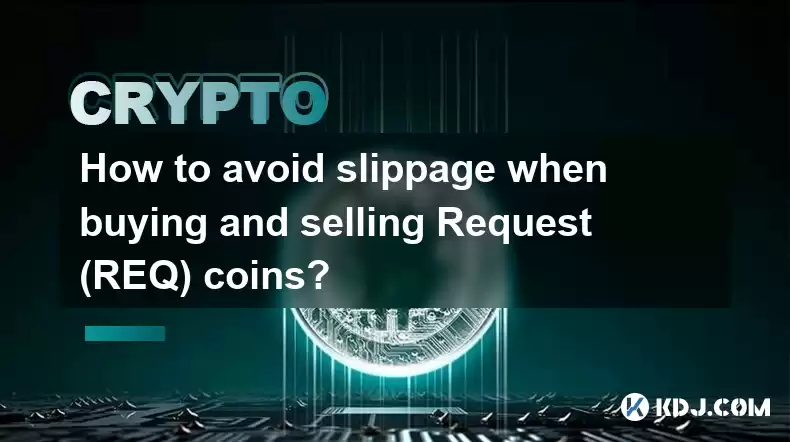-
 Bitcoin
Bitcoin $117600
0.25% -
 Ethereum
Ethereum $4424
0.10% -
 XRP
XRP $3.101
0.50% -
 Tether USDt
Tether USDt $1.001
-0.01% -
 BNB
BNB $836.2
1.26% -
 Solana
Solana $188.8
2.11% -
 USDC
USDC $1.000
0.01% -
 Dogecoin
Dogecoin $0.2301
0.57% -
 TRON
TRON $0.3485
-1.00% -
 Cardano
Cardano $0.9209
-1.34% -
 Hyperliquid
Hyperliquid $46.72
-1.19% -
 Chainlink
Chainlink $22.62
4.84% -
 Stellar
Stellar $0.4275
-0.38% -
 Sui
Sui $3.761
1.91% -
 Bitcoin Cash
Bitcoin Cash $586.7
-0.25% -
 Ethena USDe
Ethena USDe $1.001
0.01% -
 Hedera
Hedera $0.2510
2.06% -
 Avalanche
Avalanche $24.21
2.22% -
 Litecoin
Litecoin $119.7
1.07% -
 Toncoin
Toncoin $3.450
1.06% -
 UNUS SED LEO
UNUS SED LEO $9.411
-0.93% -
 Shiba Inu
Shiba Inu $0.00001298
1.20% -
 Uniswap
Uniswap $10.98
3.25% -
 Polkadot
Polkadot $3.961
2.16% -
 Dai
Dai $1.000
0.00% -
 Bitget Token
Bitget Token $4.642
0.95% -
 Cronos
Cronos $0.1514
0.57% -
 Ethena
Ethena $0.7290
3.78% -
 Monero
Monero $254.1
7.69% -
 Pepe
Pepe $0.00001102
2.47%
How to avoid slippage when buying and selling Request (REQ) coins?
When executing REQ transactions, employing limit orders and monitoring market liquidity can effectively minimize slippage, ensuring trades are executed closer to the intended prices.
Dec 26, 2024 at 05:58 am

Key Points:
- Understanding slippage and its impact on trades
- Strategies to minimize slippage when executing REQ transactions
- Exploring advanced order types and trading platforms
- Monitoring market conditions and liquidity
- Managing emotions and adhering to risk management protocols
Article:
1. Understanding Slippage
Slippage refers to the difference between the expected price of a trade and its actual execution price. This discrepancy can occur due to factors such as market volatility, liquidity constraints, and order execution speed. When buying REQ coins, slippage can result in paying a higher price than anticipated, while when selling, it can lead to receiving a lower price.
2. Strategies to Minimize Slippage
- Place Limit Orders: Limit orders allow traders to specify the maximum price they are willing to pay to buy REQ or the minimum price they are willing to accept to sell. By setting a limit price, traders can control the execution price and minimize the impact of slippage.
- Use Market Orders with Caution: Market orders execute immediately at the best available market price without any price specification. While convenient, they are prone to slippage, especially during periods of high volatility or low liquidity. Avoid using market orders in such scenarios.
- Choose Reliable Exchanges: Reputable exchanges with strong liquidity and trade execution capabilities are less likely to experience significant slippage. Research and compare different exchanges before selecting one for REQ trading.
- Manage Position Size: Smaller trade sizes are less likely to affect the market price and thus reduce slippage. Break down large trades into smaller chunks to minimize price impact.
3. Advanced Order Types
- Stop Orders: Stop orders become active when the market price reaches a predefined trigger value. Traders can use stop orders to limit potential losses or capture opportunities while minimizing slippage.
- Trailing Stop Orders: These orders dynamically adjust the stop price based on market conditions. They can help protect profits or minimize losses in fluctuating markets while reducing slippage.
4. Monitoring Market Conditions
- Check Order Book Depth: The order book depth provides insights into the liquidity available at different price levels. High liquidity indicates a lower likelihood of slippage.
- Monitor Market Volatility: High volatility can amplify slippage, as the market price can fluctuate rapidly. Track volatility indicators and adjust trading strategies accordingly.
- Consider Trading During Low Activity Hours: Liquidity tends to be lower during off-peak trading hours, increasing the risk of slippage. Try to execute trades during periods of higher activity.
5. Managing Emotions and Risk Management
- Stay Calm: Avoid making impulsive decisions in response to unexpected price movements. Panic selling or buying can exacerbate slippage.
- Set Clear Risk Parameters: Define your acceptable risk tolerance and adhere to it. This will help prevent excessive losses and reduce the impact of slippage.
- Use Stop-Loss Orders: Stop-loss orders can automatically close positions if the market price moves against you, limiting potential losses and slippage.
FAQs:
Q: What factors contribute to slippage?
A: Volatility, liquidity, order execution speed, and exchange reliability can all influence slippage.
Q: How can I minimize slippage when trading REQ coins?
A: Use limit orders, choose reliable exchanges, manage position size, monitor market conditions, and use advanced order types where appropriate.
Q: What is the difference between limit orders and market orders?
A: Limit orders specify the desired execution price, while market orders execute immediately at the best available price, potentially incurring slippage.
Q: When should I use stop orders?
A: Stop orders can be used to protect against losses or capture opportunities by triggering trades at predefined price levels.
Q: How can I monitor volatility to reduce slippage risk?
A: Track volatility indicators and adjust trading strategies accordingly. Consider using trailing stop orders to manage risk in volatile markets.
Disclaimer:info@kdj.com
The information provided is not trading advice. kdj.com does not assume any responsibility for any investments made based on the information provided in this article. Cryptocurrencies are highly volatile and it is highly recommended that you invest with caution after thorough research!
If you believe that the content used on this website infringes your copyright, please contact us immediately (info@kdj.com) and we will delete it promptly.
- Kazakhstan's Crypto Leap: Bitcoin ETF and Central Asia's Digital Finance Future
- 2025-08-13 12:45:19
- BlockDAG Presale Blazes Past $371M: Fundraising Frenzy Fuels Crypto Sensation
- 2025-08-13 13:05:21
- Meme Coins: Chasing the 2025 Surge – Which Will Moonshot?
- 2025-08-13 10:25:23
- Bitcoin's Wild Ride: Rally, Pullback, and What's Next
- 2025-08-13 10:25:23
- Bitcoin, Bitmax, and Institutional Demand: A New Era of Crypto Investment
- 2025-08-13 10:45:12
- Solana, ROAM, and Airdrops: What's the Buzz in 2025?
- 2025-08-13 11:35:13
Related knowledge

How to purchase Aragon (ANT)?
Aug 09,2025 at 11:56pm
Understanding Aragon (ANT) and Its PurposeAragon (ANT) is a decentralized governance token that powers the Aragon Network, a platform built on the Eth...

Where to trade Band Protocol (BAND)?
Aug 10,2025 at 11:36pm
Understanding the Role of Private Keys in Cryptocurrency WalletsIn the world of cryptocurrency, a private key is one of the most critical components o...

What is the most secure way to buy Ocean Protocol (OCEAN)?
Aug 10,2025 at 01:01pm
Understanding Ocean Protocol (OCEAN) and Its EcosystemOcean Protocol (OCEAN) is a decentralized data exchange platform built on blockchain technology,...

How to invest in Kyber Network Crystal v2 (KNC)?
Aug 12,2025 at 05:21pm
Understanding Kyber Network Crystal v2 (KNC)Kyber Network is a decentralized liquidity hub built on the Ethereum blockchain that enables instant token...

Where can I buy UMA (UMA)?
Aug 07,2025 at 06:42pm
Understanding UMA and Its Role in Decentralized FinanceUMA (Universal Market Access) is an Ethereum-based decentralized finance (DeFi) protocol design...

How to sell my Ren (REN) tokens?
Aug 13,2025 at 11:35am
Understanding REN Tokens and Their Role in Decentralized FinanceREN is an ERC-20 token that powers the Ren protocol, a decentralized interoperability ...

How to purchase Aragon (ANT)?
Aug 09,2025 at 11:56pm
Understanding Aragon (ANT) and Its PurposeAragon (ANT) is a decentralized governance token that powers the Aragon Network, a platform built on the Eth...

Where to trade Band Protocol (BAND)?
Aug 10,2025 at 11:36pm
Understanding the Role of Private Keys in Cryptocurrency WalletsIn the world of cryptocurrency, a private key is one of the most critical components o...

What is the most secure way to buy Ocean Protocol (OCEAN)?
Aug 10,2025 at 01:01pm
Understanding Ocean Protocol (OCEAN) and Its EcosystemOcean Protocol (OCEAN) is a decentralized data exchange platform built on blockchain technology,...

How to invest in Kyber Network Crystal v2 (KNC)?
Aug 12,2025 at 05:21pm
Understanding Kyber Network Crystal v2 (KNC)Kyber Network is a decentralized liquidity hub built on the Ethereum blockchain that enables instant token...

Where can I buy UMA (UMA)?
Aug 07,2025 at 06:42pm
Understanding UMA and Its Role in Decentralized FinanceUMA (Universal Market Access) is an Ethereum-based decentralized finance (DeFi) protocol design...

How to sell my Ren (REN) tokens?
Aug 13,2025 at 11:35am
Understanding REN Tokens and Their Role in Decentralized FinanceREN is an ERC-20 token that powers the Ren protocol, a decentralized interoperability ...
See all articles

























































































